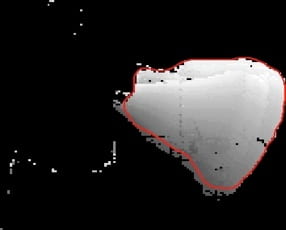| Assistive Robotics | Education and Robotics | Robot Learning | Human-Robot Trust |
Using Robots to Aid with Physical Therapy
Mechatronic and robotic systems for neurorehabilitation can generally be used to record information about the motor performance (position, trajectory, interaction force/impedance) during active movements. Being able to objectively assess the performance of a patient through repeatable and quantifiable metrics has shown to be an effective means for rehabilitation therapy. However, to date, we are unaware of any research regarding child upper limb rehabilitation techniques using non-contact robotic systems; rather, the majority of these systems are only being applied to stroke patients.
Logically, children are naturally engaged by toys, especially those that are animate. However, while there are a number of robotic toys that have been shown to be engaging to children, many of the studies focus solely on children with autism. The goal of this project is to fuse play and rehabilitation techniques using a robotic design to induce child-robot interaction that will be entertaining as well as effective for the child. Using interactive turn-taking and mimicking approaches, we not only model the child’s engagement state, but also their compliance with respect to the therapy protocol. Using this information, the humanoid robot can be effective in engaging the child correctly.


Virtual-Reality Rehabilitation for Children with Disabilities
Therapists and researchers have studied the importance of virtual reality (VR) environments in physical therapy interventions for people with different conditions such as stroke, Parkinson’s disease, and cerebral palsy. Most of these VR systems do not integrate clinical assessment of outcome measures as an automated objective of the system. Moreover, these systems do not allow real-time adjustment of the system characteristics that is necessary to individualize the intervention. In this reasearch, we focus on the development of a new VR game designed to improve upper-arm motor function through repetitive arm exercises. An automated method is used to extract outcome measures of upper extremity movements using the Fugl-Meyer assessment methodology. The accuracy of the system has been validated based on trials with adults, children, and children with Cerebral Palsy. With a corresponding average assessment error of less than 5%, the developed system shows to be a promising tool for therapists to use in individualizing the intervention for individuals with upper-body motor impairments.


TabAccess: A Wireless Controller for Tablet Accessibility
Accessibility focuses on the degree to which people with disabilities can interact with the world around them. Unfortunately, most embedded applications (apps) for smartphones and tablets are not designed with accessibility in mind, especially for those with limited fine motor control. Such individuals have difficulty in providing the common pinch and swipe gestures required for tablet control. Our Wireless Controller for Tablet Accessibility (TabAccess) is just such a device and is designed to provide an alternative input interface for increasing access to tablet-based applications. This device, coupled with a supporting tablet App software library, enables the delivery of effective education and entertainment opportunities for individuals lacking fine motor skills.
Recent articles report how tablet computers are used to engage individuals with visual, cognitive, and learning disabilities through various applications. Tablet computers have an attractive, easy-to-use interface and are equipped with touchscreen, Wi-Fi, Bluetooth, camera, accelerometer, and GPS, which increase accessibility of these devices. With a forecast value of $55 billion by 2016, the U.S. assistive-technology (AT) market is expanding rapidly. The current AT market has a focused competition between industries that target speech, hearing, and visual aids using tablet devices. However, the market has overlooked the large populace that has difficulty using the touchscreen interface, such as persons recovering from stroke, traumatic brain injuries, or living with cerebral palsy. By providing an alternative interface to control these tablet computers for individuals with limited fine motor control, we can provide unlimited potential for the development of tablet-based Apps that could assist individuals in their daily lives. When coupled with smart-grid components such as home-automation technologies, the device can provide increased quality of life and even create employment opportunities for individuals who might otherwise require caregivers or institutional care. JP Morgan Securities has estimated tablets will evolve into a $35 billion market by the end of 2012. As such, since the Tablet-industry is a new, growing market, early entrants into providing assistive technologies within this market have the potential to make large gains. This technology has been licensed to Zyrobotics.



